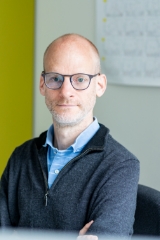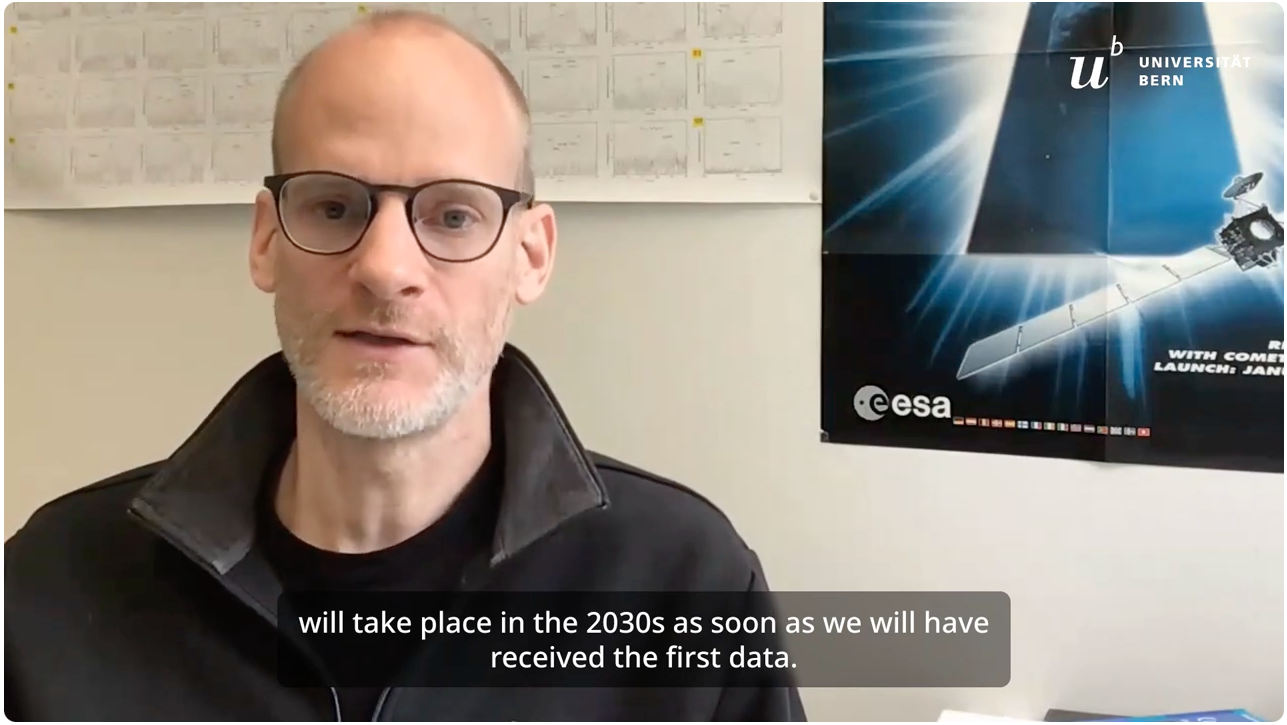Participation in ESA mission
Comet research with Bernese instruments
The University of Bern is contributing two instruments to the European Space Agency's (ESA) Comet Interceptor Mission, which is due to set off for a comet in 2029. Martin Rubin explains the importance of this mission for understanding our origins.
What are you trying to find out, Martin Rubin?
Martin Rubin: My research is about comets. We want to visit one of these with the Comet Interceptor mission of the European Space Agency ESA. Over the next two years, an international consortium is developing the main camera CoCa under the leadership of Nicolas Thomas from the University of Bern and the mass spectrometer MANiaC under my leadership. The launch of the mission is planned for 2029. The measurements will be analyzed in the 2030s, as soon as we have received the first data. I am mainly interested in the composition of comets. In addition to dust and organic material, they consist of many different types of ice. It is from this material that the well-known tails of comets are formed.
Why is this important from a scientific point of view?Comets were formed from the same material as the solar system. In other words, our sun, our planets, the moons and the asteroids. However, comets have spent most of their time at very low temperatures far away from the sun, in the deep freeze of our solar system, so to speak. As a result, they have preserved their material for over four and a half billion years. They are therefore still very pristine, and that is what makes them so interesting from a scientific point of view. On Earth, on the other hand, gravity, erosion and temperature have long since changed the original material. Comets have also brought material to Earth through impacts - not life, but possibly important building blocks for it. The question also arises as to whether the water on Earth or parts of our atmosphere originate from comets. In order to understand our own origins, we must therefore also search in the vastness of the solar system.
What benefits could result for society?This is basic research with the aim of gaining knowledge. The focus is less on commercialization than on socially relevant questions, such as: "What did the Earth and ultimately us come from?". Time and again, however, technical developments in space travel find their way into our everyday lives. Even though this was not originally planned. There are many examples of this: UV filters in glasses, cell phone cameras, fireproof suits, GPS, satellite telephony. Sometimes these also lead to significant progress, as in the case of solar panels. We also train specialists such as polymechanics, physicists and physics laboratory technicians. Many of them will later work in other areas of industry and business.
What fascinates you personally about this research project?Most people are fascinated by a view of the sky. It's no different for me. I like how varied and interdisciplinary comet research is. And the fact that comets contain important information about the history of the formation of our solar system makes them particularly exciting. It shows that comets lose none of their attraction when they are studied.
What is the biggest challenge in your research project?It is also a major challenge for our international consortium to build two highly complex instruments within the next two years. These must always be adapted to the respective mission. With Comet Interceptor, the speed of the flyby is particularly impressive - up to 70 kilometers per second, i.e. Bern-Zurich in one and a half seconds or more than seventy times the speed of a rifle bullet. The problem: at these speeds, every grain of dust becomes a projectile. The space probe and instruments must be able to withstand this and be protected accordingly.
How is the research project funded?The mass spectrometer and camera for Comet Interceptor are financed by ESA. This means that our participation comes from the Swiss contribution to ESA, of which Switzerland is a founding member. Just over half of this goes to Swiss industry in the form of orders. Participations in our international consortium are financed accordingly by their countries. In the case of CoCa and MANiaC, these are Spain, France, Germany, Belgium, Austria, Poland and Hungary. We can also draw on the resources and infrastructure of the University of Bern, such as the calibration and testing facilities that have been built up over many years. Last but not least, scientific support is currently being provided by the Swiss National Science Foundation.
This article also appears in the Anzeiger Region Bern.
About the person

PD Dr. Martin Rubin
PD Dr. Martin Rubin is the principal investigator for the MANiaC mass spectrometer on Comet Interceptor. He studied physics at the University of Bern and obtained his doctorate in 2006. He then went to the University of Michigan in the USA as a research assistant before returning in 2012 and completing his habilitation in 2015. Martin Rubin heads the comet group at the Institute of Physics and also examines the data from ROSINA, the mass spectrometer that visited comet 67P/Churyumov-Gerasimenko on board the ESA Rosetta mission. He is particularly interested in what comets are made of and how they interact with the sun.
About the mission
The Comet Interceptor space mission
Comet Interceptor is a new type of mission with a space probe that will begin its journey into space before it is even clear which comet is to be studied. A suitable target will then be selected, preferably a comet that is coming close to the sun for the first time.
Comet Interceptor is to be launched together with the ESA space probe ARIEL in 2029 and brought to the Lagrange point L2 on the side of the Earth facing away from the sun, from where it will then be launched to the interception point. It is a multi-part probe consisting of a primary platform, which also serves as a communication center, and sub-probes that enable simultaneous observations at several points around the target. The space probes are only separated from each other shortly before reaching their destination. The travel and waiting phase of the mission will take months to years.
